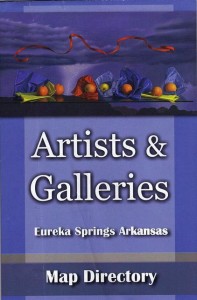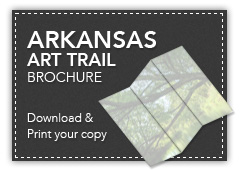Edward sits at the table overlooking the Crescent garden in Eureka Springs. With a contemplative smile he begins his story. “We had to helicopter into a remote part of the canyon and repel down,” he says calmly.

Inspiration point in the autumn captured by Eureka Springs photographer, Edward C. Robison III.
Edward C. Robison III is an accomplished landscape photographer. His connection to nature and his recognition of what is sacred are profound in his photographs. It is what draws people to his work.
It was an internship with renowned landscape photographer Michael Fatali that led Edward to a remote slot canyon in Utah. Having helicoptered in, Edward found himself in an isolated place where few people ever have the chance or courage to travel to; it changed him. Surrounded by natural beauty and mentored by Fatali, Edward found his purpose. Fatali openly acknowledges that he photographs, “places of mystery” where he feels, “at peace with the power of the Earth’s spirit.” Fatali believes his photographs are reflections of the “light and power” of nature. His influence on Edward’s work is unmistakable. Edward’s richly layered yet masterfully simple photographs are meditative moments. They allow the viewer to intimately connect with a sacred space in nature that they may have never witnessed on their own.
Edward brings a love of the landscape to his work. Growing up in the great outdoors, he attributes his passion for nature to time spent exploring with his father. His acute perception to the natural processes surrounding him inspired his creativity early. He began capturing nature’s moments with paint on canvas. As a young adult he followed his passion with formal art studies. Edward studied at the Kansas City Institute of Art, an institutional leader in visual arts education. “The Kansas City Institute stressed the importance of substance in art,” Edward says. “It is where I learned just how important it is to incorporate a strong spiritual element in my work.”
More than just the likenesses of a place under beautiful light, Edward’s photographs are like the quite hum of bees in a field or a softly stirring breeze through woodland trees. They nudge the viewer to joie de vivre, an exuberant enjoyment of life. With what he describes as a “sensitivity and energetic connection with nature,” he finds and captures the beauty of nature in less suspecting places. “I think I see things differently,” Edward confesses. “My appreciation of nature allows me to find the sacred in my own backyard. I try to show others what I have discovered through my work.”

Hawksbill Crag in the Buffalo River National Park captured by Edward C. Robison III.
Although Edward has photographed Yellowstone and other high profile sites, he is perhaps most recognized for his photographs of less famous (less traveled) places in the central United States and most recently in Arkansas. The ethereal qualities of Edward’s photographs have naturally placed them in the internationally acclaimed Sierra Club Desk Calendar 4 years in a row and although he could call anywhere home, Edward C. Robison and his family still live in Eureka Springs where he continues to find beauty in his backyard. His work is featured on the Arkansas Art Trail. His book, Postcards from Eureka, he records the beauty of the quirkly little Ozark Mountain town, Eureka Springs. His gallery, Sacred Earth, is located just west of Eureka Springs on the Arkansas Art Trail and catalogs his progress and travels. His work can be viewed and prints can be obtained from the Sacred Earth Gallery website.
Chances are if you are looking at an amazing photograph of the sun setting at Inspiration Point or a waterfall in the Buffalo River National Park, it is Edward’s vision and image. His photographs are in high demand and are often used to promote Eureka Springs and the surrounding area. His work is featured on EurekaSprings.com, the Arkansas Art Trail, and more recently the Buffalo River National Park Region.
Make your own discoveries on the Trail with Edward. Register for one of his Workshops. See his work displayed throughout Eureka Springs and all along the Arkansas Art Trail. Follow Arkansas Art Trail and Sacred Earth Gallery on Facebook.











